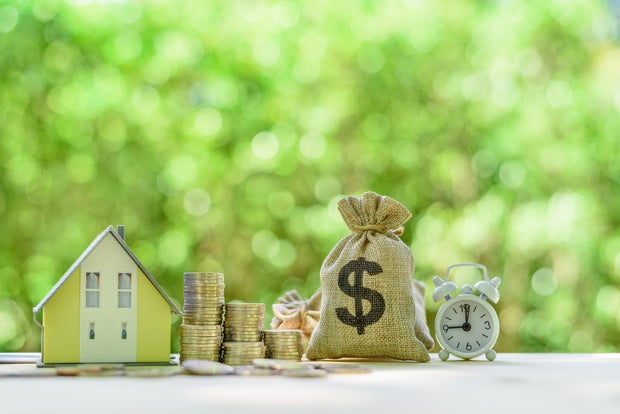Getty Images/iStockphoto
For many retirees, a reverse mortgage can be a useful tool that adds some much-needed breathing room to their finances. By allowing homeowners ages 62 and older to tap into their home equity without the need for monthly payments, these unique loans can free up cash for everyday expenses, medical bills or nearly any other retirement needs. And, by borrowing this way, retirees can also stay in their homes, meaning that a reverse mortgage can be a potentially ideal option for those who need to borrow on a fixed income.
But a reverse mortgage isn’t just free money. While there aren’t monthly payments tied to reverse mortgages, they’re still loans that must eventually be repaid with interest. Unlike a traditional mortgage, though, the repayment process usually happens years or decades after the loan has been issued. This timing can make the repayment process feel far in the future, but understanding how it works now is a crucial component of helping you or your heirs avoid confusion and financial stress down the road.
So, how exactly do you pay back a reverse mortgage loan? From when repayment is triggered to how the loan is actually settled, below we’ll break down what you need to know.
Compare today’s top reverse mortgage borrowing options online now.
How do you pay back a reverse mortgage loan?
Reverse mortgage repayment typically begins when a maturity event occurs, meaning the borrower no longer meets the loan’s basic conditions. This can happen when:
- The home is sold. If you decide to sell your home, the proceeds from the sale are first used to pay off the reverse mortgage balance, including interest and any fees tied to the loan. If there’s money left over after the reverse mortgage loan is paid, you (or your heirs) keep the remaining proceeds.
- The borrower moves out permanently. Reverse mortgages generally require the home to be your primary residence. If you move out for more than 12 consecutive months — let’s say, for example, you have to move into a long-term care facility temporarily after a medical event — the loan becomes due.
- The borrower dies. In this scenario, the loan must be repaid by your estate or heirs. They usually have the option to sell the home to repay the loan, pay it off using other funds or refinance the balance into a traditional mortgage if they wish to keep the property.
Reverse mortgage repayment doesn’t happen through monthly installments like a regular mortgage, either. The full loan balance, including the original borrowed amount, accrued interest, mortgage insurance premiums and fees, comes due all at once.
There is a caveat worth noting, though. If the loan comes due and the home sells for less than the loan balance, neither the borrowers nor the heirs (depending on the situation) will typically be held personally liable for the difference. That’s because most reverse mortgages are non-recourse loans, meaning the lender can only collect repayment from the home’s value, not other assets.
Find out more about the reverse mortgage loans available to you today.
Can you pay back a reverse mortgage loan before it’s due?
While most reverse mortgage borrowers don’t make regular payments, you’re not actually required to wait until a triggering event to repay what you owe. In fact, paying the loan off early, either in full or in part, can offer some strategic benefits.
For example, some borrowers may choose to repay the balance to preserve more home equity for their heirs or to sell the home on their own timeline. Others may want to eliminate the accumulating interest and fees that grow over time, since reverse mortgage balances increase the longer they remain outstanding.
Here are a few ways early repayment can work:
- Full repayment: You can pay the entire balance at any time without facing prepayment penalties on most federally insured reverse mortgages. This can make sense if your financial situation improves or if you decide you no longer need the loan’s proceeds.
- Partial payments: Some borrowers make occasional lump-sum payments to keep the balance from growing too quickly. This can be helpful if you want to extend how long the loan lasts or minimize interest charges over time.
- Proceeds from selling: If you sell the home voluntarily rather than waiting for a triggering event, you can use the sale proceeds to repay the loan and retain the remaining equity.
Before paying the loan back early, just make sure to check your loan agreement and speak with your lender to confirm there are no special fees or conditions. But for many borrowers, having the flexibility to repay early can be a valuable feature.
The bottom line
While reverse mortgages allow homeowners to access their equity without making monthly payments, the loan does need to be repaid eventually. For borrowers, that means planning ahead, whether by setting expectations with family, exploring early repayment options or understanding what will happen to the home when the loan comes due. With the right preparation in place, though, paying back a reverse mortgage doesn’t have to be complicated. By getting clear on the rules and options now, you can ensure a smoother and more predictable transition when the time comes.


